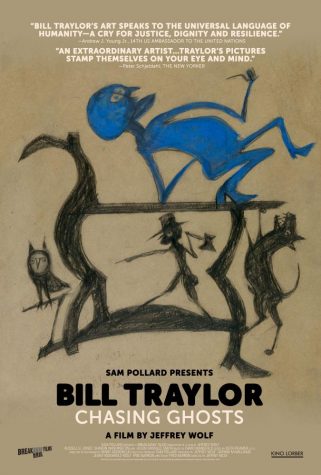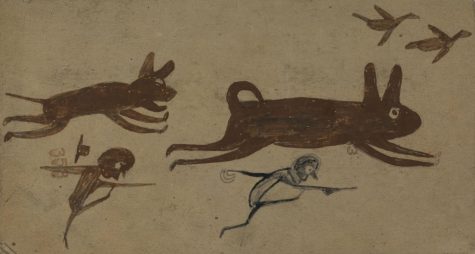Barely stretching itself out to a 75-minute runtime, “Bill Traylor: Chasing Ghosts” is the perfect example of a documentary whose subject matter outshines its depiction.
Directed by Jeffrey Wolf, the film tells the story of Bill Traylor, a former slave turned self-taught artist. Traylor’s art was first noticed by another artist in town while he was drawing on a rough piece of paper on a Montgomery sidewalk. His life and works are chronicled through a series of interviews that collectively explain how his art became renowned. For all the love on display, one can’t shake the feeling that “Chasing Ghosts” feels like a PowerPoint presentation as it prosaically regurgitates stories about Traylor’s life.

For an artist whose artwork is often described as unique, revolutionary and extraordinary, it’s sad to see his life and legacy relegated to a string of talking heads. Perhaps “sad” fails to capture the film’s most notable quality: “Chasing Ghosts” is sleep-inducing.
There’s a somniferous quality to “Chasing Ghosts.” Its un-inventiveness is reminiscent of the type of documentary a middle school teacher would force you to endure after wheeling a giant TV into the classroom. Although the subject matter at hand is arguably more engaging than whatever this hypothetical teacher from your past made you watch, that dry, History Channel-esque quality persists, lulling you to sleep because it cannot find a way to keep you alert.
And so, it could be argued “Chasing Ghosts” is for lazy dilettantes. The type of thing playing in a secluded corner of an art gallery that, after 10 minutes of observation, your aunt weaponizes at the dinner table as a means of affecting artistic intellect. It’s fodder — pecking seed made with the sole intent of being digestible, not tasty.
Oddly, this makes “Chasing Ghosts” the perfect primer for people to learn about an artist who has often been shunned when it comes to talking about Black American art. It’s barely over an hour, easy to understand, full of curious little anecdotes and littered with enough personalities to convince the average viewer they’re watching something important.
It’s when Wolf begins dissecting Traylor’s idiosyncratic artistic method that the staleness of his documentary reveals itself. There was Traylor, painting these marvelous arcane subjects using whatever he could get his hands on and here is Wolf, producing something that looks just like every other documentary out there.
“Chasing Ghosts” suffers from a disconnect between these two artists. The simplicity of Wolf’s vision undersells the brilliance of its subject matter. His bland filmmaking matches Traylor’s down-to-earth personality but not his distinctive art style.

Bill Traylor’s art is described as an eruption — some sort of fragmentary brilliance that shocked the eye — and you get none of that with “Chasing Ghosts.” Well, you do get a lot of his art, but its exhibition is akin to that of a television that’s been on for far too long. It’s cool, but there’s just nothing to be felt. There’s no eruption, just a bland sense of fixedness that makes you think you could’ve read the artist’s Wikipedia entry instead.
“Bill Traylor: Chasing Ghosts” might be best suited as a gallery side-piece in a retrospective about Traylor’s legacy as an artist. It’s a dry documentary that merely spits information. If only it took a cue from Traylor and buried itself in its craft to arrive at something new, something that blasted the eyes of its viewers into a state of ecstasy and kept them staring until the credits stopped scrolling and the screen went black.
Email Nicolas Pedrero-Setzer at [email protected].























































































































































